Newark, NJ Pollen and Allergy Report for Summer 2023
Pollen Allergy Trends in Newark, NJ
When is pollen lowest in Newark, NJ?

February
Lowest month total PPM
Avg. PPM
When is pollen highest in Newark, NJ?

May
Highest month total PPM
Avg. PPM
How does pollen in Newark, NJ compare to New Jersey?
Newark has a lower average PPM than the state of New Jersey.
Newark yearly avg PPM:
New Jersey yearly avg PPM:
How does pollen in Newark, NJ compare to the USA?
Newark has a lower average PPM than the USA.
Newark yearly avg PPM:
USA yearly avg PPM:
Is pollen worse this year in Newark, NJ?
Spring 2023 was worse than spring 2022.
Spring 2023 PPM:
Spring 2022 PPM:
Average PPM in Newark, NJ
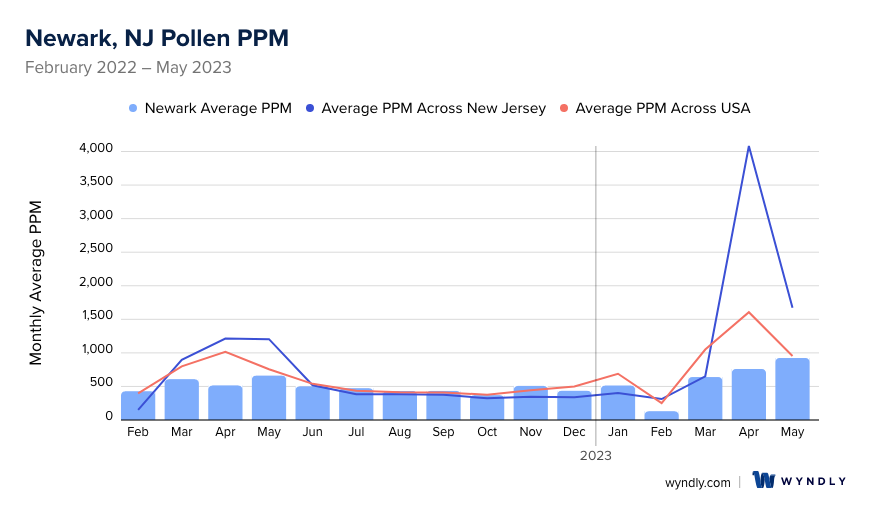
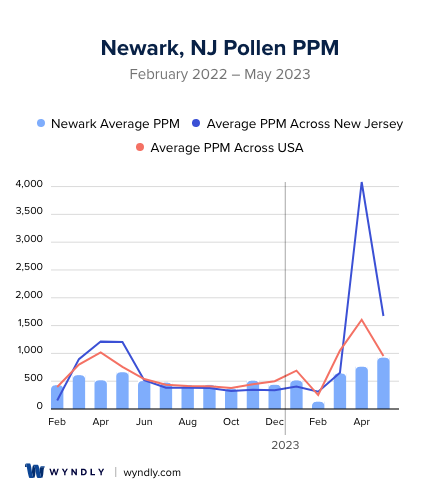
Newark, NJ Pollen and Allergy Breakdown by Month
Grass
When is grass pollen highest in Newark, NJ?
May has the highest grass pollen in Newark, NJ with an average PPM of
When is grass pollen lowest in Newark, NJ?
December has the lowest grass pollen in Newark, NJ with an average PPM of
Tree
When is tree pollen highest in Newark, NJ?
May has the highest tree pollen in Newark, NJ with an average PPM of
When is tree pollen lowest in Newark, NJ?
August has the lowest tree pollen in Newark, NJ with an average PPM of
Weed
When is weed pollen highest in Newark, NJ?
November has the highest weed pollen in Newark, NJ with an average PPM of
When is weed pollen lowest in Newark, NJ?
February has the lowest weed pollen in Newark, NJ with an average PPM of
Newark, NJ Pollen Monthly Breakdown by Pollen Type
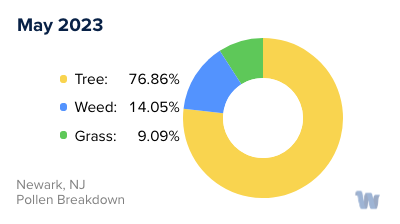
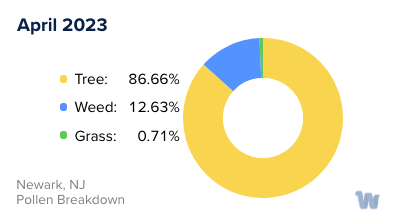
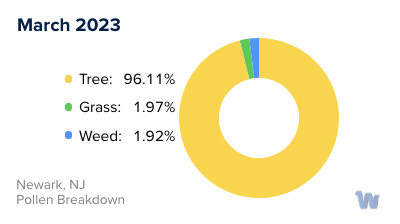
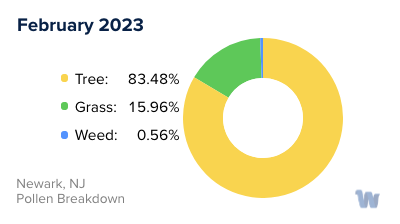
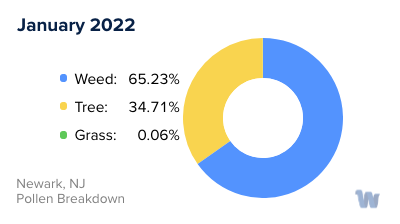
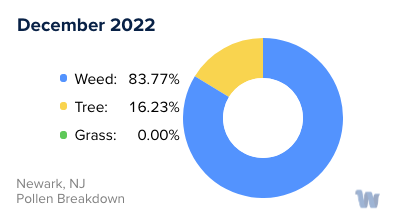
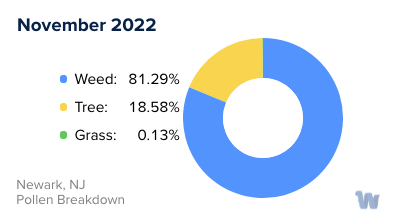
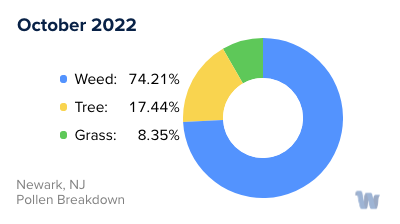
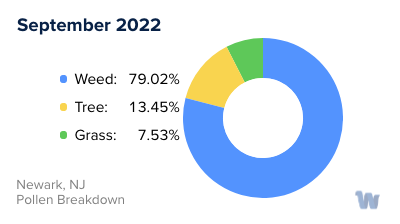
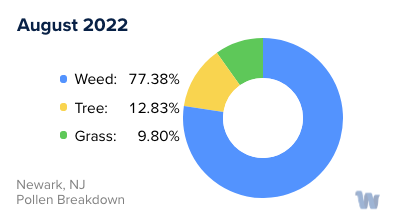
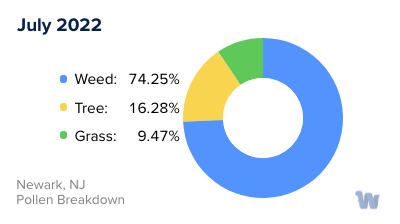
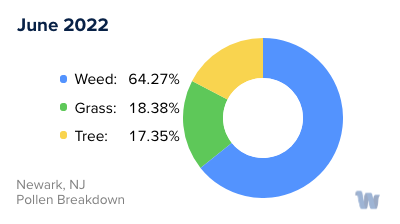
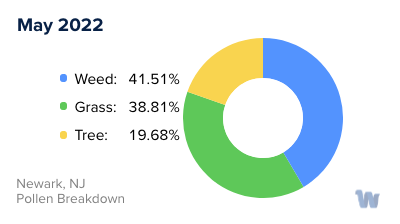
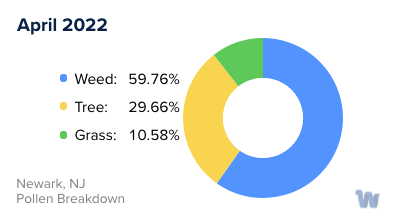
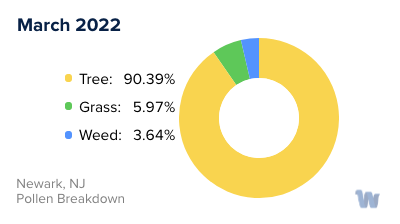
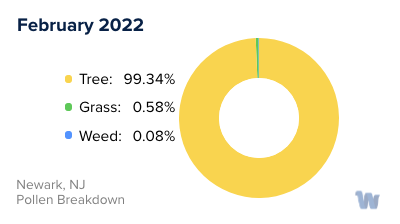
Pollen and Hay Fever in Newark, NJ
Pollen allergies, often referred to as hay fever, are a common concern for residents of Newark, New Jersey. Unlike indoor allergies that can occur year-round, pollen allergies are seasonal and typically flare up during the spring, summer, and fall months. The primary sources of pollen in New Jersey are grasses, trees, and weeds, each having their own specific season when they release pollen into the air.
The onset of allergy season in New Jersey is marked by the blooming of trees in the spring, with tree pollen becoming the main allergen during this period. Specific trees that contribute to this pollen load include oak, hickory, ash, walnut, cedar, and mulberry trees. Following the spring, the summer months see a shift in the primary pollen producers from trees to grasses. Timothy grass, bent grass, sweet vernal grass, and orchard grass are among the common grasses that release pollen during the summer.
As summer transitions into fall, weeds take center stage as the principal pollen producers. Allergens like ragweed, lamb’s quarter, wormwood, and orache are more prevalent during this season, causing allergy symptoms to persist into late summer and until the end of the allergy season.
The allergy season in New Jersey usually begins in mid-February due to the state's colder winter. Even though the length of the allergy season is average, New Jersey is considered one of the better eastern states for those with allergies. It is worth noting that pollen counts in Newark are typically at their peak during the months of April, May, June, and September. During these months, residents may find some relief in the evenings when pollen counts tend to be lower.
Understanding the cycles of these different pollen producers can help individuals in Newark, New Jersey, better anticipate and manage their pollen allergies throughout the year.


